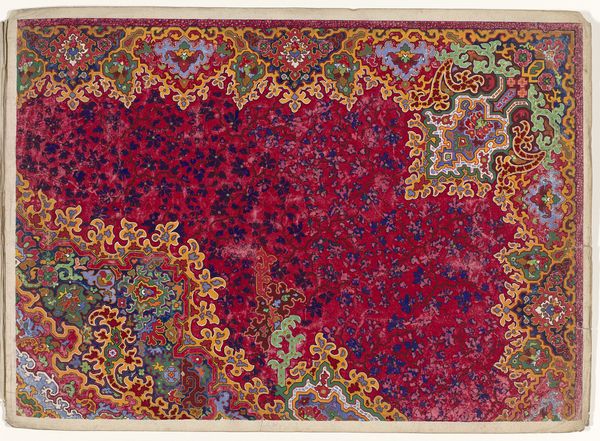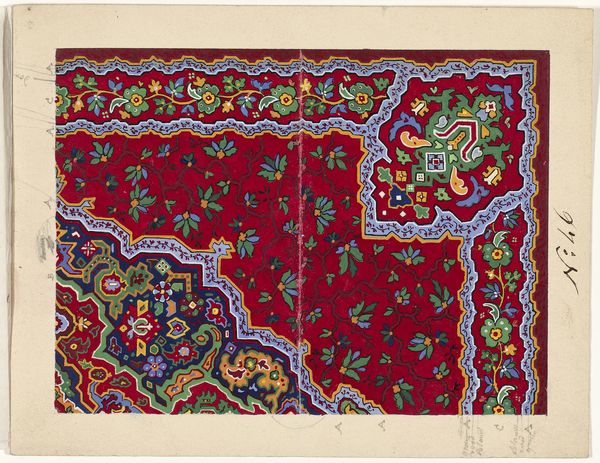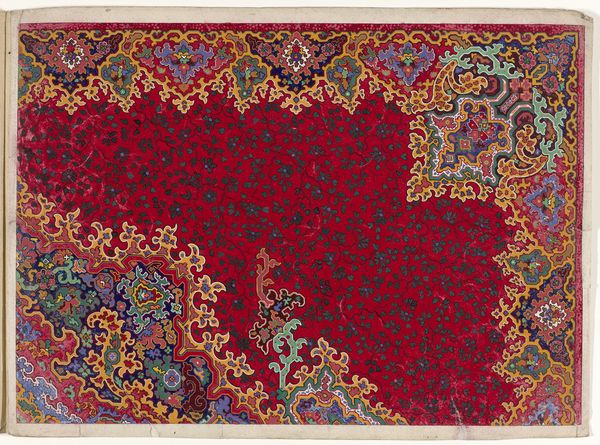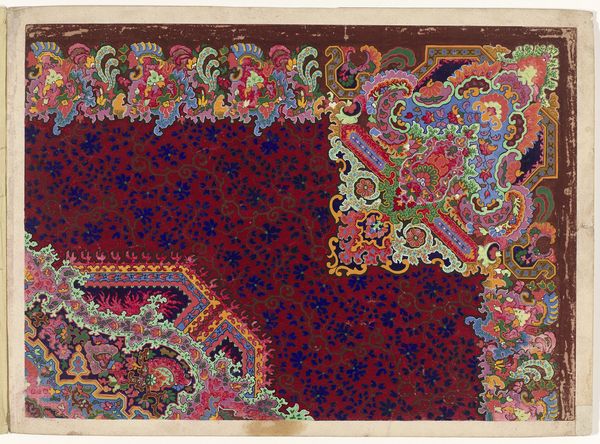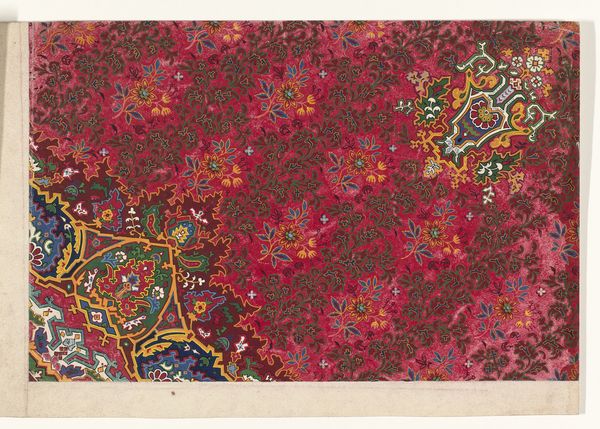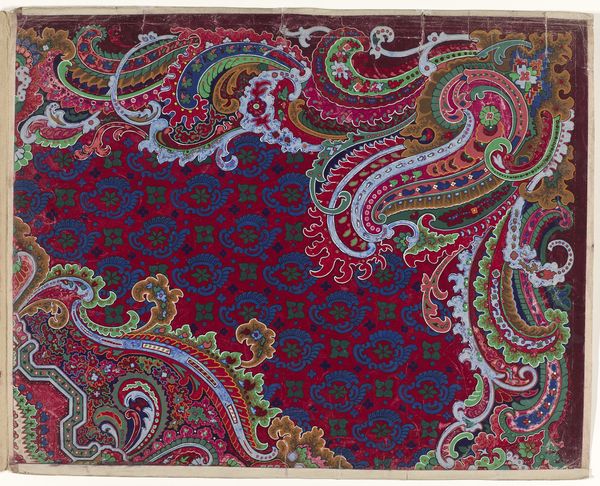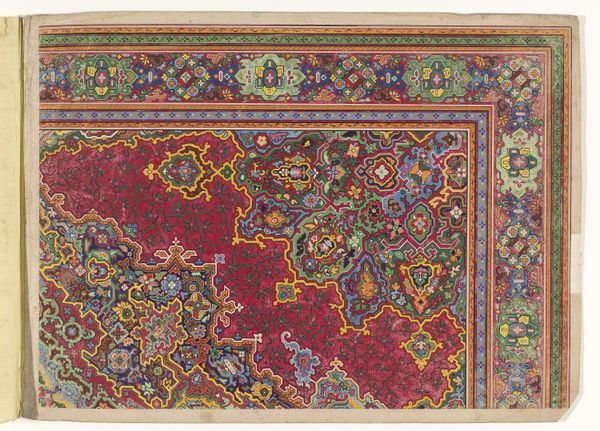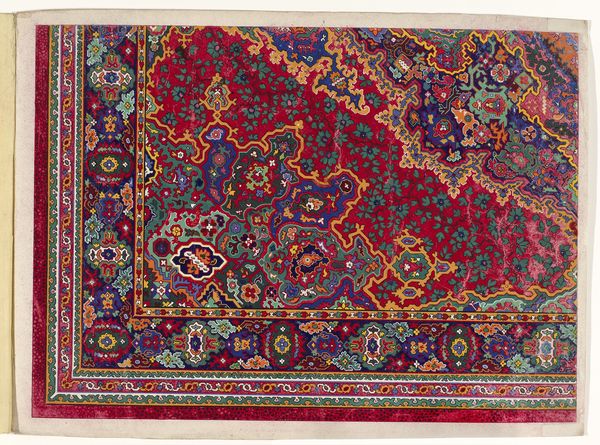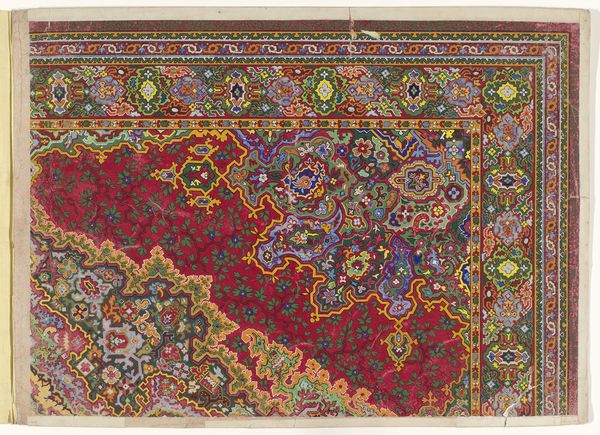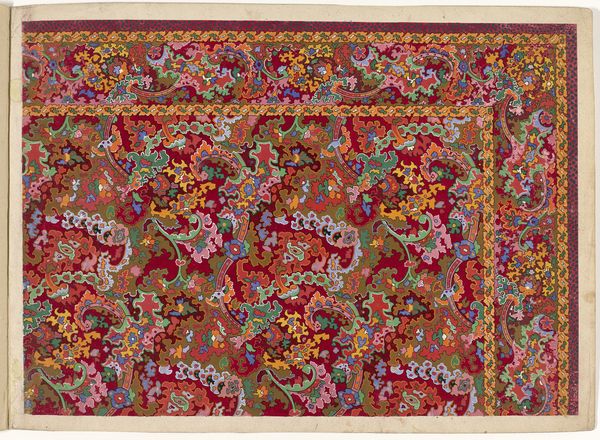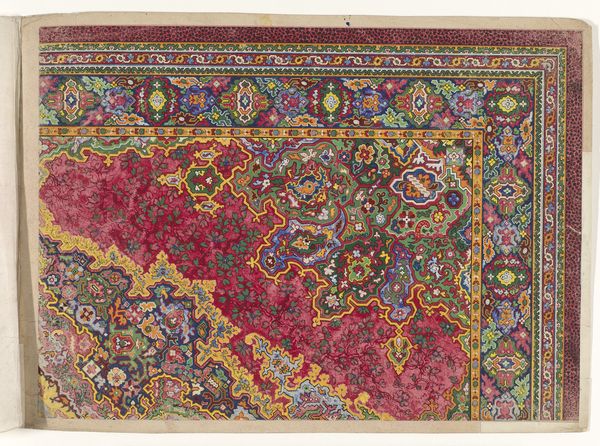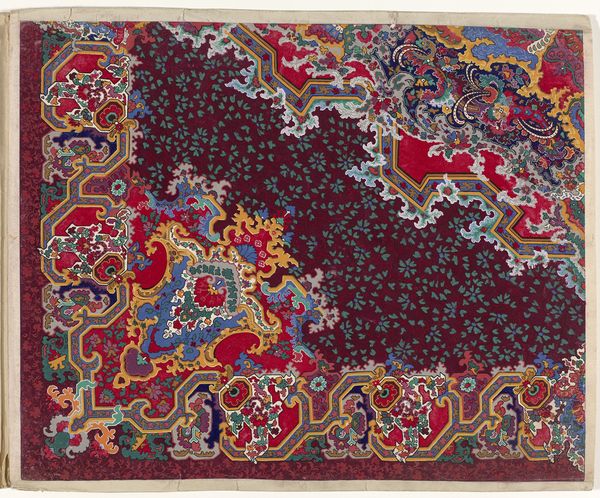
drawing, gouache, paper
#
pattern-and-decoration
#
drawing
#
natural stone pattern
#
naturalistic pattern
#
gouache
#
paper
#
geometric pattern
#
abstract pattern
#
organic pattern
#
geometric
#
flower pattern
#
repetition of pattern
#
vertical pattern
#
pattern repetition
#
layered pattern
Dimensions: height 306 mm, width 416 mm
Copyright: Rijks Museum: Open Domain
This carpet design was produced anonymously, and without a precise date. Immediately striking is its vibrant use of colour and intricate floral patterns, hallmarks of textile art produced across Persia and Central Asia. Textile production in these regions was, and still is, deeply embedded in local social and economic structures. Carpet weaving, for instance, was often a communal activity, with families or village collectives working together. Designs like these, with their rich symbolism and meticulous execution, were not just decorative, but also served as visual narratives, reflecting cultural values, historical events, or even personal stories. Understanding the institutional and social context of these carpet designs is essential for appreciating their full significance. Historical archives, ethnographic studies, and accounts from traders and travelers can all provide valuable insights into the production, distribution, and reception of these works. By examining these resources, we can move beyond mere aesthetic appreciation and begin to understand the social and cultural forces that shaped the creation of this beautiful design.
Comments
No comments
Be the first to comment and join the conversation on the ultimate creative platform.

